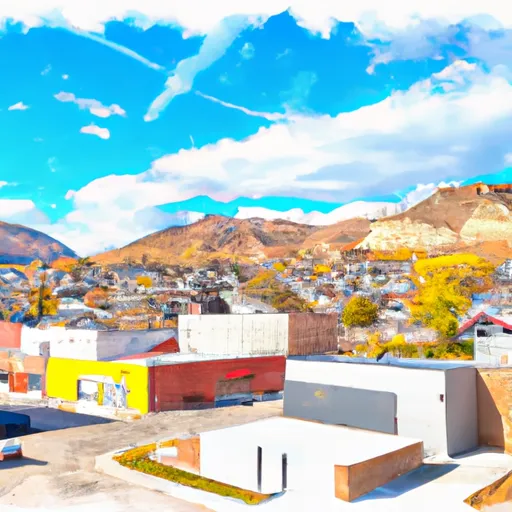-
 Snoflo Premium
Snoflo Premium
Get unlimited access to all our content
With no Ad interruptions! - Start Your Free Trial Login with existing account
Salina
Eden Index
Climate
8.1
•
Recreation
2.5
•
Community
•
Safeguard
4.1/10

Salina, Utah is a charming town nestled in Sevier County, known for its picturesque landscapes and rich outdoor recreation opportunities. The climate in Salina is characterized by hot summers and cold winters, with average temperatures ranging from around 90°F (32°C) in the summer to 30°F (-1°C) in the winter. The area receives a moderate amount of precipitation throughout the year.
Hydrologically, Salina is situated near the banks of the Salina Creek, which flows through the town. This creek is an important water source for the community and supports a diverse range of aquatic life. Additionally, the nearby Sevier River offers excellent fishing and boating opportunities for outdoor enthusiasts.
Salina is a haven for outdoor recreation enthusiasts, with a variety of activities to choose from. The surrounding mountains provide ample opportunities for hiking, mountain biking, and camping. The area is also known for its excellent hunting grounds, attracting sportsmen from far and wide. Additionally, nearby lakes and reservoirs offer boating, fishing, and swimming options.
In conclusion, Salina, Utah offers a pleasant climate, proximity to water bodies, and a multitude of outdoor recreational activities, making it an ideal destination for nature lovers and adventure seekers alike.
What is the Eden Index?
The Snoflo Eden Index serves as a comprehensive rating system for regions, evaluating their desirability through a holistic assessment of climate health, outdoor recreation opportunities, and natural disaster risk, acknowledging the profound impact of these factors on livability and well-being.
Climate Health Indicator (CHI): 8.1
Salina receives approximately
320mm of rain per year,
with humidity levels near 60%
and air temperatures averaging around
9°C.
Salina has a plant hardyness factor of
6, meaning
plants and agriculture in this region thrive during a short period during spring and early summer. Most
plants will die off during the colder winter months.
By considering the ideal temperature range, reliable water supplies, clean air, and stable seasonal rain or snowpacks, the Climate Health Indicator (CHI) underscores the significance of a healthy climate as the foundation for quality living.
A healthy climate is paramount for ensuring a high quality of life and livability in a region, fostering both physical well-being and environmental harmony. This can be characterized by ideal temperatures, reliable access to water supplies, clean air, and consistent seasonal rain or snowpacks.
Weather Forecast
Streamflow Conditions
Escalante Desert-Sevier Lake
Area Rivers
Escalante Desert-Sevier Lake
Snowpack Depths
Escalante Desert-Sevier Lake
Reservoir Storage Capacity
Escalante Desert-Sevier Lake
Groundwater Levels
Recreational Opportunity Index (ROI): 2.5
The Recreational Opportunity Index (ROI) recognizes the value of outdoor recreational options, such as parks, hiking trails, camping sites, and fishing spots, while acknowledging that climate plays a pivotal role in ensuring the comfort and consistency of these experiences.
Access to outdoor recreational opportunities, encompassing activities such as parks, hiking, camping, and fishing, is crucial for overall well-being, and the climate plays a pivotal role in enabling and enhancing these experiences, ensuring that individuals can engage in nature-based activities comfortably and consistently.
Camping Areas
| Campground | Campsites | Reservations | Toilets | Showers | Elevation |
|---|---|---|---|---|---|
| Sunglow | 5 | 7,252 ft | |||
| North and West Beaches - Yuba State Park | None | 5,067 ft | |||
| Manti | 8 | 7,514 ft | |||
| Palisade State Park | 75 | 5,931 ft | |||
| Upper Six Mile Ponds | 5 | 8,966 ft | |||
| Mallard Bay Overflow | 30 | 8,844 ft |
Nearby Ski Areas
Catastrophe Safeguard Index (CSI):
The Catastrophe Safeguard Index (CSI) recognizes that natural disaster risk, encompassing floods, fires, hurricanes, and tornadoes, can drastically affect safety and the overall appeal of an area.
The level of natural disaster risk in a region significantly affects safety and the overall livability, with climate change amplifying these risks by potentially increasing the frequency and intensity of events like floods, fires, hurricanes, and tornadoes, thereby posing substantial challenges to community resilience and well-being.
Community Resilience Indicator (CRI):
The Community Resilience Indicator (CRI) recognizes that education, healthcare, and socioeconomics are crucial to the well-being of a region. The CRI acknowledges the profound impact of these elements on residents' overall quality of life. By evaluating educational resources, healthcare accessibility, and economic inclusivity, the index captures the essential aspects that contribute to a thriving community, fostering resident satisfaction, equity, and social cohesion.

